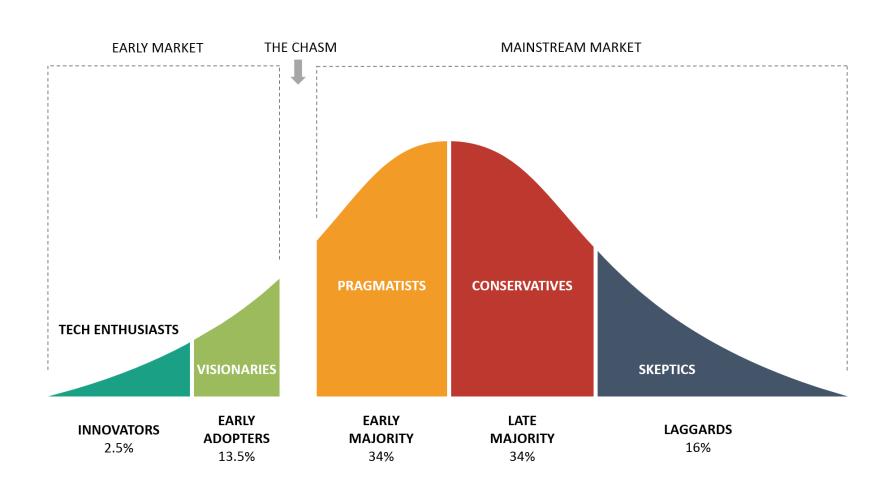3 Steps to Accelerate Ag Tech
Precision agricultural technology has been around for decades now, in what started with things like GPS, auto steer, and data creation. Today we’re seeing an evolution from precision equipment and enablement technologies that help us collect, organize, and repeat — to data science and decision tools that help us actually use the data generated during this precision era, in a sort of overlapping fashion.
The digital ag era is arriving at an already changing time in the state of agriculture, including the average age of farm operators, amount of connected technology on farm, pricing on a global market for inputs and commodities, consolidation in ag business and farms, and of course, more options to connect digital tools on the farm than ever before. Users must be able to find value, break through barriers of change, and be able to both afford and profit from a new technology before it sees meaningful adoption in the industry.
As we continue to move into this digital era, we all have seen the adoption curve for any technology, but how do we continue to accelerate that for ag tech? Consistently, there are three steps to break the slow adoption of new technologies across industries. Below we examine how to apply these steps in ours.
1) Find the Barriers
One of the biggest challenges in ag technology adoption today is that there can be many barriers to paradigm shifts and change. Barriers can be functionality, cost, true benefit, time to implement a change, complexity, the list goes on. Finding the barriers to a new technology is critical to grow the product and scale the digital tool to a large user base. If you have the greatest tech tool in agriculture, but it takes 25 hours a week to maintain, update, and use, adoption will be slow.
MORE BY SCOTT SPECK
The same is true when it comes to pricing. We are now seeing lower entry price points, helping move beyond the original innovators and early adopters who first latched onto the products. These tools are now starting to reach a larger user base (see Figure 1 below). Examples of this are our new programs and pricing for Climate FieldView. Finding the barriers and taking steps to remove them are critical to accelerating the adoption of ag tech on a large scale.

Figure 1: Technology Adoption Life Cycle. Source: Business-to-You.com.
2) Identify the True Opportunity
Is the new digital product just “cool” or is there a clear need? Cup holder lights in my pickup are “cool,” but I don’t need them and they don’t justify a purchase. When developing a new ag technology tool or offering one to customers, especially in agriculture, knowing who the product is for and problem it solves is critical.
Not every product needs to be disruptive, and processes don’t necessarily need to be disrupted just because they can be! Do we actually solve a problem that a farm has, or are we creating something looking for a problem? Having better ways of doing old processes digitally can be a game changer if it helps solve a problem (productivity, cost savings, profit enhancing, time savings, etc.), and these types of improvements don’t need to upturn the entire industry. Proper execution and timing are also crucial. The iPod wasn’t the first device of its kind on the market, but it is arguably the one most of us think of when we brought music off of CDs and into a digital world. Being the first isn’t always the best, but being the best at connecting with customer bases is critical.
3) Support the Change
This is listed as No. 3, but could arguably be listed as the number one reason technology adoption can be slow. Change is not always easy, especially when it comes to new technology. When I choose to take that leap of faith, I want access to good technical support. Especially in agriculture technology, the secret formula for scaling and providing a truly valuable solution is pairing technology with people who can help walk through ways to use and create value at the individual customer level.
While the process of going digital in agriculture will never be perfect, being prepared can provide immense opportunities to grow and provide customers with an easier way of doing things. Breaking through the barriers while finding opportunity and supporting the change each step of the way will help ensure growth and value to the user base.










